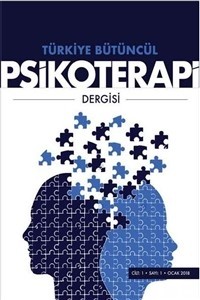Öz
The frame of treatment is one
of the key words in psychoanalytic psychotherapies. Contemporary psychoanalytic
schools show a deep respect for the patient’s unique subjectivity regardless of
the severity of the condition, and this respect alone has a tremendous
psychotherapeutic value. Many patients feel deeply understood perhaps for the
first time and only in the therapy room. However, therapists encounter
pathological personalities in their daily life, outside of the frame of
treatment, too, and witness the highly destructive impact of personality
pathologies, particularly narcissistic ones, on other people and the society.
In this regard, the circumstances in the therapy room and the external world
are quite different. In the room, the therapist does not judge the client, not
claim to “guide” them, not sympathize with the narcissist’s victims, nor
address their destructive behaviors directly. In the eyes of the therapist, no
matter how much harm they caused to others, they are the victims who are not
fully settled in the real world as their psychological birth has been thwarted.
Hence, they cannot even recognize the severe damage they inflict on others. The
therapist focuses on this aspect, trying to hear the silent cry for help behind
the contemptuous glare of the narcissist. However, outside the room, observing
the heavy damage
caused by other narcissists who are not their patients does affect the
therapists. Even though they may not react as harshly as others may, they now
empathize and even sympathize with the narcissist’s victims.
Anahtar Kelimeler
Devaluation Envy Intrusion Inflation Pathological Narcissism
Kaynakça
- American Psychiatric Association. (2013). Diagnostic and statistical manual of mental disorders (5. baskı). Arlington, VA: American Psychiatric Publishing.
- Adorno, T.W. ve Benjamin W. (2015). The complete correspondence 1928 - 1940. New Jersey: John Wiley & Sons.
- Bateman, A. ve Fonagy, P. (2010). Mentalization based treatment for borderline personality disorder. World Psychiatry, 9, 11-15.
- Carlson, J. ve Sperry, L. ( 2013). The disordered couple. New York: Routledge.
- Greenacre, P. (1957). The childhood of the artist: Libidinal phase development and giftedness. The Psychoanalytic Study of the Child, 12: 47–72.
- Kernberg, O. (2004). Aggressivity, narcissism, and self-destructiveness in the psychotherapeutic relationship. New Haven: Yale University Press.
- Mahler, M.S., Pine, F. ve Bergman, A. (1975/2000). The psychological birth of the human infant symbiosis and individuation. New York: Basic Books.
- Masterson, J. F. (2000). The personality disorders: A new look at the developmental self and object relations approach : Theory, diagnosis, treatment. Phoenix: Zeig Tucker & Theisen Publishers.
- Masterson, J. F. (2013). The narcissistic and borderline disorders: An integrated developmental approach. New York: Routledge.
- Schore, A. N. (2016). Affect regulation and the origin of the self: The neurobiology of emotional development. New York: Routledge.
- Stern, D. N. (1998). The Interpersonal World of the Infant: A View from Psychoanalysis and Developmental Psychology. Londra: Karnac Books.
- Stern, D. N. (2011). Bir bebeğin günlüğü (S.Kohen, çev.). İstanbul: Litera Yayıncılık.
Öz
Çerçeve,
psikanalitik psikoterapilerin anahtar sözcüklerinden birisidir. Çağdaş
psikanalitik okullarda terapist, durumu ne kadar ağır olursa olsun hastanın
biricik öznelliğine derin bir saygı duyar; sadece bu saygının bile tek başına
büyük bir terapötik değeri vardır. Pek çok hastanın derinden anlaşıldığını
hissettiği belki de ilk ve tek yerdir terapi odası. Fakat terapistler de günlük
yaşamlarında patolojik kişiliklerle çerçevesiz karşı karşıya gelirler ve
özellikle narsisistik patolojilerin, başkaları ve toplum üzerindeki ağır
tahripkar etkisine tanık olurlar. Bu açıdan, odadaki koşullar ile dış dünya
birbirinden çok farklıdır. Odadaki terapistnarsisistin kurbanlarına sempati
duymaz, danışanını yargılamaz, narsisistin tahripkar davranışlarını doğrudan
hedef almaz, ona 'yol gösterme' iddiasında değildir. Terapiste göre,
çevrelerine ne kadar zarar vermişlerse de, onlar gerçek dünyaya tam ayak
basamamış, psikolojik doğumları engellenmiş kurbanlardır. Bu nedenle verdikleri
büyük zararı fark dahi edememektedirler.
Terapist onların bu özelliklerine odaklanır ve narsisistin kendisine yönelmiş
küçümseyici bakışlarının arkasındaki sessiz çığlıklarını duymaya çalışır. Fakat
kendi hastaları dışındaki diğer narsisistlerin neden olduğu ağır yıkımları oda
dışında gözlediğinde etkilenir. Tepkileri başkaları kadar sert olmasa da, bu
kez odadakinden farklı olarak, narsisistin kurbanlarına empati, hatta sempati
gösterir.
Anahtar Kelimeler
Kaynakça
- American Psychiatric Association. (2013). Diagnostic and statistical manual of mental disorders (5. baskı). Arlington, VA: American Psychiatric Publishing.
- Adorno, T.W. ve Benjamin W. (2015). The complete correspondence 1928 - 1940. New Jersey: John Wiley & Sons.
- Bateman, A. ve Fonagy, P. (2010). Mentalization based treatment for borderline personality disorder. World Psychiatry, 9, 11-15.
- Carlson, J. ve Sperry, L. ( 2013). The disordered couple. New York: Routledge.
- Greenacre, P. (1957). The childhood of the artist: Libidinal phase development and giftedness. The Psychoanalytic Study of the Child, 12: 47–72.
- Kernberg, O. (2004). Aggressivity, narcissism, and self-destructiveness in the psychotherapeutic relationship. New Haven: Yale University Press.
- Mahler, M.S., Pine, F. ve Bergman, A. (1975/2000). The psychological birth of the human infant symbiosis and individuation. New York: Basic Books.
- Masterson, J. F. (2000). The personality disorders: A new look at the developmental self and object relations approach : Theory, diagnosis, treatment. Phoenix: Zeig Tucker & Theisen Publishers.
- Masterson, J. F. (2013). The narcissistic and borderline disorders: An integrated developmental approach. New York: Routledge.
- Schore, A. N. (2016). Affect regulation and the origin of the self: The neurobiology of emotional development. New York: Routledge.
- Stern, D. N. (1998). The Interpersonal World of the Infant: A View from Psychoanalysis and Developmental Psychology. Londra: Karnac Books.
- Stern, D. N. (2011). Bir bebeğin günlüğü (S.Kohen, çev.). İstanbul: Litera Yayıncılık.
Ayrıntılar
| Konular | Psikoloji |
|---|---|
| Bölüm | Makaleler |
| Yazarlar | |
| Yayımlanma Tarihi | 1 Ocak 2018 |
| Gönderilme Tarihi | 29 Aralık 2017 |
| Kabul Tarihi | 30 Aralık 2017 |
| Yayımlandığı Sayı | Yıl 2018 Cilt: 1 Sayı: 1 |


